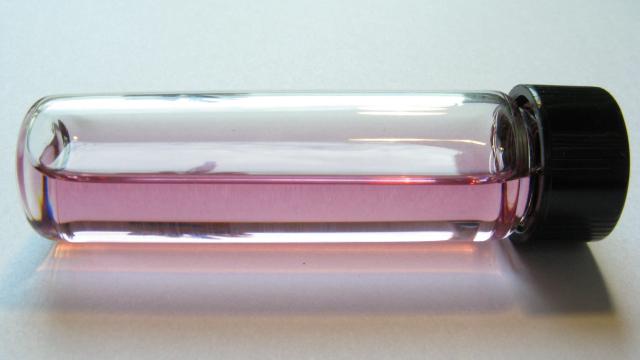On my commute to work today, I had the misfortune of being crammed into a narrow tube underground. But it could have been worse: I could’ve been squished into a single dimension.
That’s what recently happened to some krypton atoms in an Ulm University chemistry lab. Using transmission electron microscopy (or TEM), a team managed to squeeze the noble gas into a nanotube with a diameter 1/500,000th that of a human hair. In such a confined space, the atoms could not squeeze by one another and coalesce, and they became a one-dimensional gas. The team’s research is published in the journal of the American Chemical Society.

“Carbon nanotubes enable us to entrap atoms and accurately position and study them at the single-atom level in real-time,” said Andrei Khlobystov, a chemist at the University of Nottingham and co-author of the study, in a university release. “Because Kr has a high atomic number, it is easier to observe in a TEM than lighter elements. This allowed us to track the positions of Kr atoms as moving dots.”
It’s really hard to pin down atoms. They are small, and in a gas they flit about at roughly the speed of sound. To image the krypton, the researchers had to trap the atoms and shuttle them into a very, very small test tube.
To do this, they trapped the krypton in buckyballs—short for buckminsterfullerene, a soccer ball-shaped molecule composed of 60 carbon atoms. The buckyballs acted as a cage for each krypton atom. The researchers could then release the krypton from the buckyballs by heating it to 2,192 degrees Fahrenheit (1,200 Celsius) or irradiating it with an electron beam. Both methods cause the buckyballs to fuse, leaving the krypton atoms in a neat line in a carbon nanotube. Once in that line, the definition between each atom disappeared: they were a uniform, one-dimensional gas.
“As far as we know, this is the first time that chains of noble gas atoms have been imaged directly, leading to the creation of a one-dimensional gas in a solid material,” said Paul Brown, director of the University of Nottingham’s Nanoscale and Microscale Research Centre, in the release.
If we’re being extremely technical, sure, the krypton in the tube is three-dimensional in that the gas still has some volume, even if its diameter is extremely narrow. It exists in the same way that ‘one-dimensional’ strands of electrons stretch across the Milky Way galaxy. Still, it’s cool. Studying how atoms interact can help scientists learn how matter behaves in such cramped conditions and thus better understand nature at its extremes.
